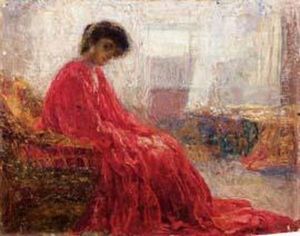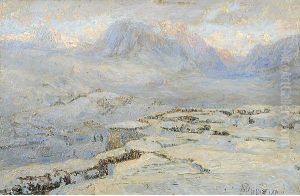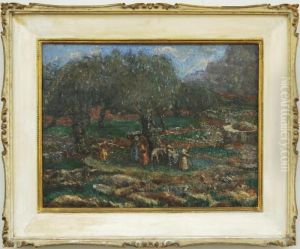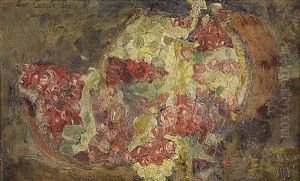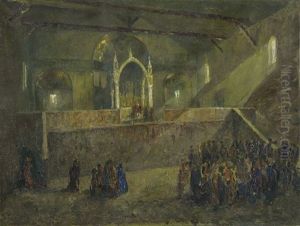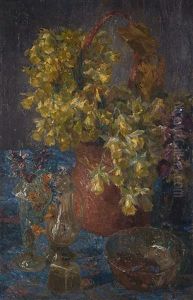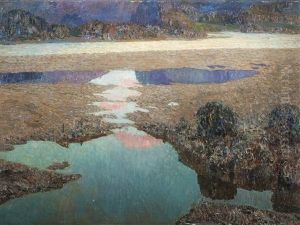Angiolo D'Andrea Paintings
Angiolo D'Andrea was an Italian painter born on November 16, 1880, in Venice. He grew up in an era where Italian art was undergoing significant changes, moving away from traditional academic styles towards more innovative and modern approaches. D'Andrea studied at the Accademia di Belle Arti in Venice, where he was influenced by the works of the great Venetian masters, as well as the burgeoning Symbolist movement, which sought to express ideas and emotions through powerful symbolic imagery.
In his early career, D'Andrea was associated with the Ca' Pesaro group, which was a collective of young Venetian artists who were interested in exploring new artistic directions. This group was named after the Ca' Pesaro palace where their works were exhibited. D'Andrea's work during this period was characterized by a strong use of color and a focus on the play of light and shadow, which reflects the influence of the Venetian painting tradition.
As he developed his style, D'Andrea began to incorporate elements of Divisionism, a technique similar to Pointillism, where colors are separated into individual dots or patches which interact optically. This was part of a broader trend in Italian art, paralleling developments in France by artists like Georges Seurat. D'Andrea's Divisionist phase included the use of vibrant, contrasting colors and a dynamic treatment of forms, which endowed his paintings with a sense of rhythm and vitality.
During World War I, D'Andrea served in the Italian army, and his experiences during the war had a profound impact on his work. After the war, his style evolved once more, as he turned towards a more classical and serene aesthetic, often depicting traditional Italian landscapes and scenes of everyday life with a timeless, tranquil quality. This period reflected a desire for stability and peace after the upheaval of the war years.
Angiolo D'Andrea's contribution to Italian art was significant in his synthesis of traditional techniques with new, modernist approaches. He remained active as an artist until his death in Venice on September 29, 1942. His works can be found in various Italian museums and galleries, where they continue to be appreciated for their vibrant colorism and their blend of modernity with Italian artistic heritage.
